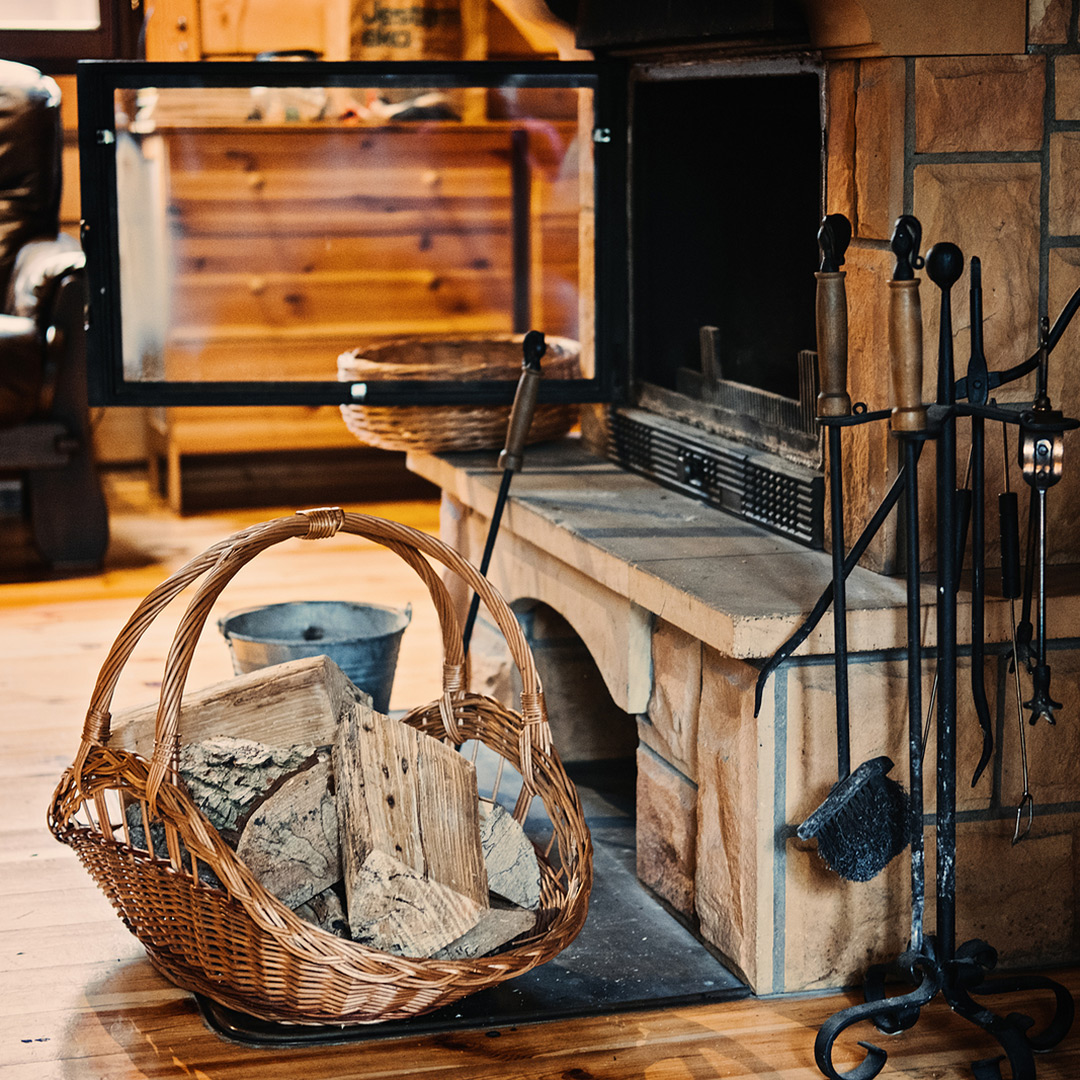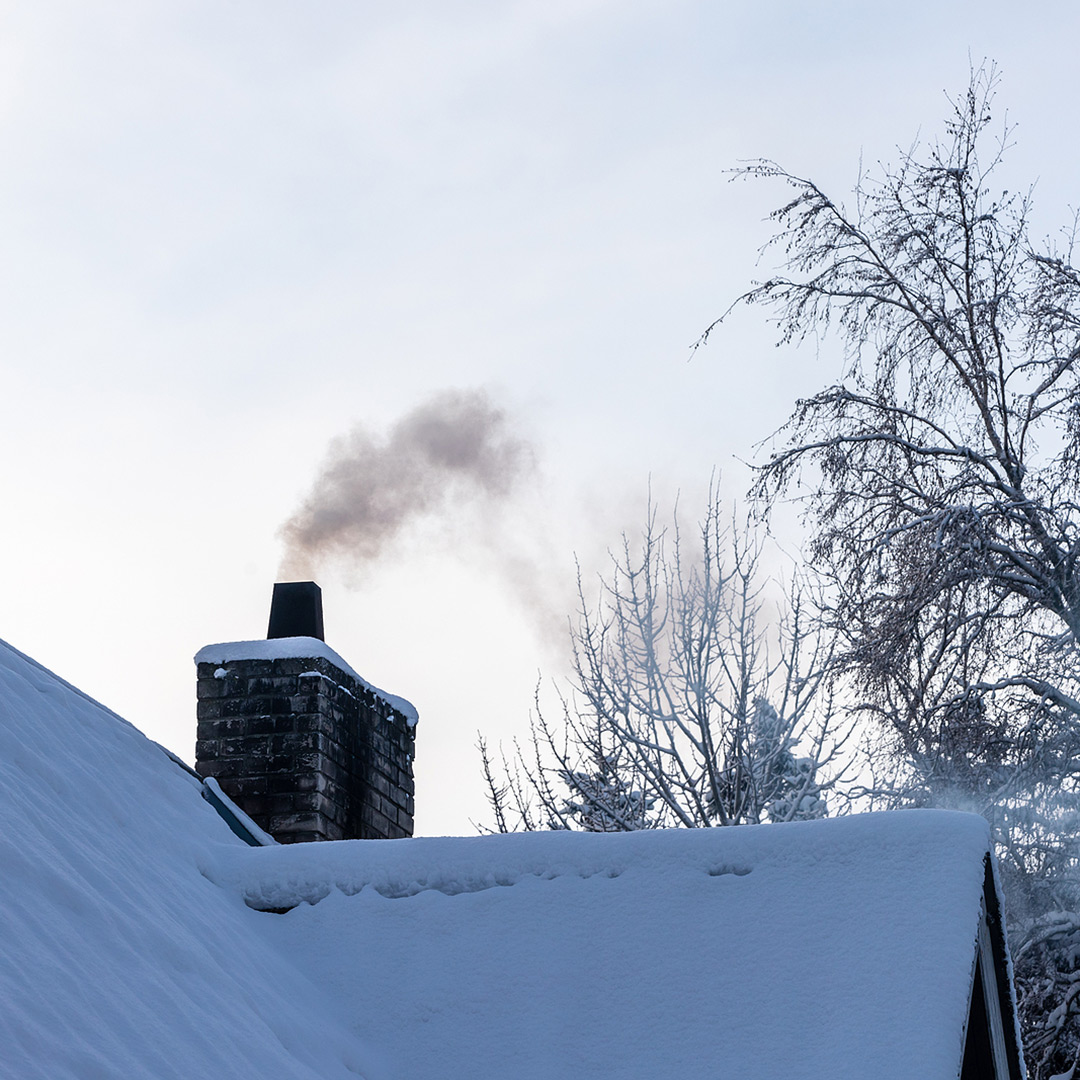How Much Does Firewood Matter?
You probably already know that owning and using a fireplace is a serious responsibility. What you may not know is that the type of firewood you use in the fireplace will have a lot to do with how it performs and how safe it is.
National Chimney Cleaners of Fairfield County, CT and Morris County, NJ, would like to tell you a little about firewood choices and how they affect your fireplace, chimney and home.
 Seasoned vs. unseasoned
Seasoned vs. unseasoned
Seasoned, or dry, firewood is wood that’s lost the majority of its natural moisture content. You can tell if logs are well-seasoned by knocking them together. If they make a hollow or clacking sound, the wood is basically dry. If they make a thud, they’re likely still full of moisture.
Dry wood burns hotter and more completely than damp wood while producing much less smoke, which is created by moisture. More smoke from your fire means more smoke in your chimney, and that means more flammable creosote that will need to be professionally cleaned out.
Hardwoods vs. softwoods
The density of your firewood plays a part in the quality and duration of your fires and also in the production of smoke.
Hardwoods make robust, longer-lasting fires and contain less moisture and resin than softwoods. They can take a little longer to get started, but once they do, they burn vibrantly.
Most softwoods will produce more smoke that you probably want. The only advantage to using quick-starting softwoods would be if you want a brief fire for a short evening of entertainment.
Hardwoods include ash, maple, hawthorne, cedar, oak and cherry.
Softwoods include spruce, walnut, birch, willow, poplar and alder.
The problems with smoke
You’ll notice we mentioned smoke quite often in talking about different types of firewood. This is because excess smoke can lead to some very serious problems with your fireplace and chimney system.
 There are two primary issues with smoke.
There are two primary issues with smoke.
- Creosote in the flue
Creosote is a puffy, sticky or solid tar-like substance that builds up in your chimney when you use a wood fireplace. A byproduct of smoke condensation, creosote is highly flammable and is the cause of most chimney fires in the U.S. each year.
You can’t avoid creating some creosote, but you definitely can keep it to a minimum by sending less smoke to your chimney. The firewood principles we talked about above will help you accomplish this.
- Smoke backups
Another issue with a smoky fireplace is smoke backups. When a fire is producing large amounts of smoke, it can’t always draft efficiently up the chimney. The resulting backup sends not only smoke but also deadly carbon monoxide into your living spaces.
Carbon monoxide is created when fuel (in this case, wood) burns sluggishly and incompletely, which is exactly what damp wood and some softwoods are known to do. This gas is invisible and odorless but can be fatal when inhaled in sufficient amounts.
You do your part, we’ll do ours
It’s your job to use smart burn practices to reduce excess smoke and make more vibrant and enjoyable fires. Our job is to clean and inspect your chimney to remove creosote and ensure that it’s running safely and efficiently.
National Chimney Cleaners is ready to help with all your chimney and fireplace needs. Reach a chimney expert at (800) 631-6177 or get in touch with our contact form.

 Seasoned vs. unseasoned
Seasoned vs. unseasoned There are two primary issues with smoke.
There are two primary issues with smoke.